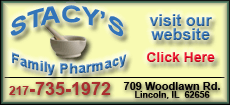 The first time this happens, you undoubtedly have many
questions: Is there a difference between branded and generic
medicines? Will the generic be just as safe and effective? Do
insurance companies prefer generics? If you have, you're not alone
in asking these questions. The first time this happens, you undoubtedly have many
questions: Is there a difference between branded and generic
medicines? Will the generic be just as safe and effective? Do
insurance companies prefer generics? If you have, you're not alone
in asking these questions.It's no secret that the rising costs of
health care services and medications have been affecting millions of
Americans -- indeed, our economy -- and will undoubtedly continue to
do so in the future. However, generic alternatives have proven to be
a critical factor in slowing down national health care spending. In
fact, generic drug use has saved America's health care system
approximately $1.07 trillion over the past decade, with $192.8
billion in savings achieved in 2011 alone, according to a 2012 study
by the IMS Institute for Healthcare Informatics.
However, while consumers recognize the cost advantage of generic
drugs, they are reminded, from time to time, of the question of
quality and efficacy of generic medications versus name-brand
equivalents.

Consumers should know that the U.S. Food and Drug Administration,
the federal agency responsible for protecting and promoting public
health, requires that generic drugs must be identical or
"bioequivalent" to brand-name drugs in dosage form, safety,
strength, route of administration, quality, performance
characteristics and intended use.
[to top of second column] |

"The U.S. FDA tests generic medicines just as rigorously as their
branded counterparts," explains Venkat Krishnan, senior vice
president and regional director at Ranbaxy Inc. "Generic drugs must
meet rigid qualifying criteria before they can be made available to
the general public. At Ranbaxy, we have stringent protocols in place
to ensure that our products are both safe and effective, and we
stand behind that, focused on our philosophy of 'Quality and
Patients First.'"
People are choosing generics in increasing numbers, out of
economic necessity and because they are increasingly better
informed. Of the 4 billion prescriptions written in 2011, nearly 80
percent were dispensed using generic versions of their brand-name
counterpart. With generics, consumers have the option of paying a
price that is as much as 85 percent lower than name-brand drugs.
If you have questions about switching to a generic prescription,
have a conversation with your doctor or pharmacist, or visit
www.gphaonline.org for more
information and the facts about generic drugs.
[Brandpoint]
 |